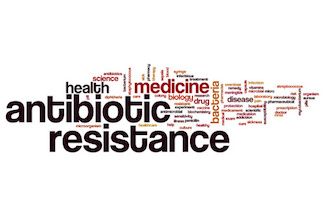A combination of existing infection prevention control strategies and vaccines can help reduce AMR-related mortality.
Image Credit: Adobe stock

In a new series launched by The Lancet, investigators conducted a novel modeling analysis that estimates existing infection prevention methods could prevent up to 750,000 deaths annually that are associated with antimicrobial resistant infections.1
Specifically, the analysis says certain strategies such as the following can save thousands of lives:
- Improving infection prevention and control in healthcare facilities including better hand hygiene and more regular cleaning and sterilization of equipment, could save up to 337,000 lives a year.
- Universal access to safe drinking water and effective sanitation in community settings could prevent approximately 247,800 deaths annually.
- Expanding the roll out of some pediatric vaccines, such as pneumococcal vaccines which help protect against pneumonia and meningitis, and introducing new ones, such as RSV vaccines for pregnant mothers, could save 181,500 lives a year. 1
“Our findings highlight how public health actions to prevent infections in the first place should be prioritized as a strategy to tackle AMR as these methods have the potential to drastically reduce the number of deaths from AMR-associated infections,” co-author Yewande Alimi of Africa CDC, said in a statement. “If we can focus on improving infection control methods, water and sanitation and vaccination in [low-or middle income country] LMICs then it should be possible to reduce the number of deaths linked with AMR by 10% by 2030.” 1
COVID-19 and AMR
“Antimicrobial resistance is on the rise—accelerated by inappropriate use of antibiotics during the COVID-19 pandemic—threatening the backbone of modern medicine and already leading to deaths and disease which would have once been prevented,” series co-author, professor Iruka Okeke of the University of Ibadan, Nigeria, said in a statement. 1
In fact, a new World Health Organization (WHO) analysis showed that despite only a minority needing them, 75% of hospitalized COVID-19 patients received antibiotics. In fact, only 8% of these patients with COVID-19 had bacterial co-infections requiring antibiotics. These therapies were used ‘just in case’ they helped, according to the WHO research. The highest rate of antibiotic use was seen among patients with severe or critical COVID-19, with a global average of 81%.2
What You Need to Know
AMR was estimated to cause 1.27 million deaths and contribute to 4.95 million deaths in 2019.
The misuse of antibiotics during the COVID-19 pandemic has exacerbated antimicrobial resistance (AMR). Despite only a minority needing antibiotics, 75% of hospitalized COVID-19 patients received them.
Climate change is expanding the habitat of vectors like deer ticks in North America, increasing the incidence of Lyme disease, which requires antibiotic treatment. This increased use of antibiotics could further contribute to AMR.
The AMR Mortality Needle is Moving in the Wrong Direction
An analysis looking at AMR mortality published 2 years ago estimated that it was the leading cause of death worldwide in 2019. Investigators estimated that resistance itself caused 1.27 million deaths in 2019, and that antimicrobial-resistant infections played a role in 4.95 million deaths.3
Potential Increases in AMR
As the world continue to grapple with AMR, geography plays a significant role in the types of infections that are seen and the types of antibiotics being prescribed. For example, in North America, Lyme disease is moving into new areas due to climate change and the incidence rates are expected to grow as the natural habitat of the vector, deer ticks, expand further north into Canada, and north and west into the United States.3 Lyme disease treatment typically involves a course of antibiotics, and commonly prescribed therapies for it include doxycycline and amoxicillin. While this does not present any issues currently, the need for increased antimicrobials could lead to further resistance.3
What Can be Done
Doing a better job of existing infection prevention methods with the aforementioned strategies defined by The Lancet authors is 1 way to prevent AMR deaths on a wide scale.
“Focusing on interventions with demonstrated effectiveness in preventing infections must be at the heart of global action to tackle AMR. According to co-author professor Joseph Lewnard of the University of California in Berkeley, said in a statement. “Preventing infections reduces the use of antibiotics and reduces selection pressure for AMR so that the drugs will work when they are most needed.”1
Additionally, the United Nations is planning a September meeting on AMR and looks to bring together global leaders to discuss strategies to mitigate AMR across human health, animal health, agri-food sectors and the environment.2
Interested parties can read the series here.





